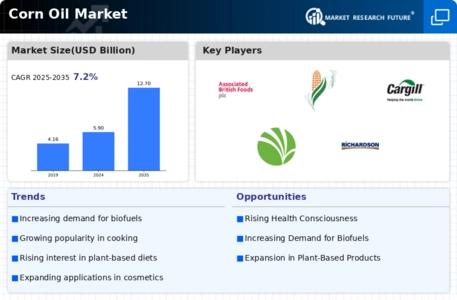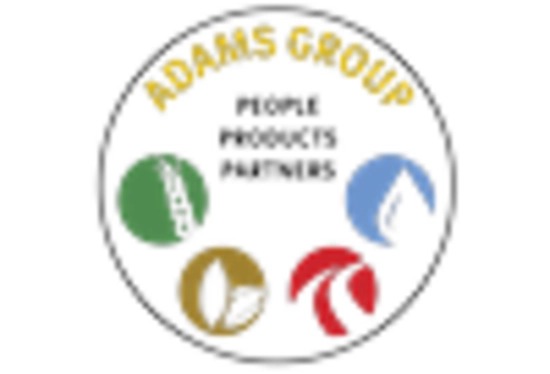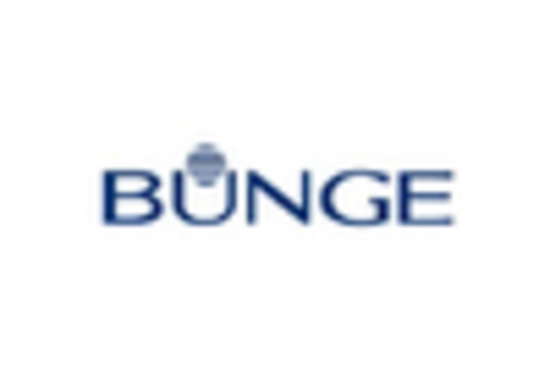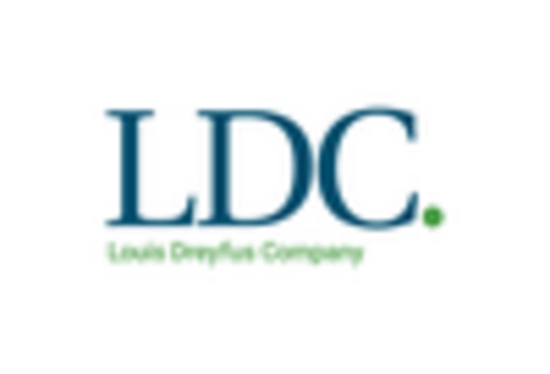Market Analysis
Corn Oil Market (Global, 2024)
Introduction
Corn oil is in the process of being transformed, as the consumers’ tastes change in favor of the healthier fats and the production of food is more and more subject to the demands of sustainable agriculture. The food industry is adapting to the new diets and the rising demand for vegetable products. Corn oil, which is extracted from the germ of the corn, is increasingly recognized for its versatility in the kitchen, from frying to baking, and its good nutritional profile, which is rich in polyunsaturated fats and vitamin E. As the awareness of the impact of the food industry on the environment grows, corn oil is seen as a more sustainable alternative to other vegetable oils, which gives it a special appeal to health-conscious consumers and food manufacturers. This report examines the market for corn oil, examining the key trends, the competition and the factors influencing consumers’ preferences in this fast-evolving sector.
PESTLE Analysis
- Political
- The market for corn oil in 2024 is influenced by a number of political factors, including government subsidies for agriculture. In the United States, the government will allocate approximately $ 10 billion in subsidies for corn production, which will directly affect the supply and price of corn oil. In addition, trade relations with Mexico and Canada are of particular importance, since these countries account for about 30% of US corn oil exports. Any changes in tariffs or agreements on trade would have a significant impact on market development.
- Economic
- In 2024 the economy of the corn oil market is shaped by the rate of inflation and the volume of household consumption. The rate of inflation in the United States is expected to be around 3.5%, which will affect the purchasing power of consumers and their spending on food products, including corn oil. In addition, the average price of corn oil is expected to fluctuate between $3.75 and $ 4.50 per gallon, depending on the cost of production and supply chain factors. This price will affect the behavior of consumers and the demand for corn oil in various industries.
- Social
- In 2024, the trend towards the use of healthier cooking oils is evident, and about 60 per cent of consumers are actively looking for cooking oils with lower levels of saturated fats. This leads to a rise in the demand for corn oil, which is seen as a healthier alternative to other cooking oils. As a consequence of the rise in popularity of plant-based diets, the use of corn oil in products for vegetarians and vegans has also increased, thereby widening the market for corn oil among health-conscious consumers.
- Technological
- The corn oil market is influenced by the technological advances in agriculture. In 2024, the precision agriculture technology will increase the yield of corn by about 15%, which will improve the efficiency of corn oil production. In addition, the extraction method such as cold pressing will also be popularized, which will make the corn oil produced have a better nutritional composition and more nutritional value, and will be more popular with health-conscious consumers.
- Legal
- Legal factors affecting the corn oil market in 2024 include food labeling regulations and food safety standards. The Food and Drug Administration (FDA) has tightened its labeling requirements, and all foods containing corn oil must clearly indicate their origin and production methods. These regulations are estimated to cost the industry $500,000. The costs are higher for smaller producers. The ongoing discussions about the use of genetically modified corn could lead to further regulations.
- Environmental
- In the corn oil market, a growing importance is attached to the consideration of the environment, particularly in the field of sustainable farming. By 2024, about 25 percent of the corn oil industry will have adopted sustainable methods such as reduced pesticide use and crop rotation to minimize their carbon footprint. The estimated carbon footprint of corn oil production is 0.50 kilograms of CO2 per liter. To meet the demand for CO2 compensation, companies are investing in carbon compensation programs.
Porter's Five Forces
- Threat of New Entrants
- Corn oil is a market with a medium barrier to entry. There is a need for considerable capital investment in production and distribution. But the growing demand for healthy cooking oils and the growing popularity of corn oil as a substitute for other cooking oils may make it more attractive to new entrants. But the market is already dominated by well-established brands. It will be difficult for new entrants to establish a foothold in the market.
- Bargaining Power of Suppliers
- The bargaining power of the suppliers in the corn oil market is relatively low, because of the availability of a variety of sources for the corn and other raw materials. The agrarian character of corn production makes it possible to diversify the suppliers, which in turn weakens their bargaining power. The large-scale manufacturers can also exploit their scale advantages to secure favorable terms, which weakens the suppliers’ influence still further.
- Bargaining Power of Buyers
- High — The buyers of corn oil have a high bargaining power. They are free to choose between brands and products. They have many alternatives, including other vegetable oils, which enable them to choose according to price and quality. They also exert considerable pressure on the producers to keep their prices low, which increases their bargaining power.
- Threat of Substitutes
- High—The threat of substitutes in the corn oil market is high, as there are many alternative cooking oils, such as olive oil, canola oil, and sunflower oil. These substitutes compete with corn oil on health, taste, and price, so corn oil producers must highlight their unique selling propositions to maintain market share.
- Competitive Rivalry
- The corn-oil market is highly competitive, with numerous established brands and new entrants competing for market share. Price, quality, brand, and distribution are the key factors in competition. Price competition is a common feature, and so are advertising wars. The high degree of competition increases the intensity of rivalry.
SWOT Analysis
Strengths
- High demand for corn oil due to its health benefits and versatility in cooking.
- Established supply chain and production infrastructure.
- Growing consumer preference for plant-based oils over animal fats.
Weaknesses
- Price volatility due to fluctuations in corn production and weather conditions.
- Limited awareness among consumers about the benefits of corn oil compared to other oils.
- Potential negative perception related to genetically modified corn.
Opportunities
- Expansion into emerging markets with increasing disposable incomes.
- Development of organic and non-GMO corn oil products to cater to health-conscious consumers.
- Innovative marketing strategies to enhance brand visibility and consumer education.
Threats
- Intense competition from other vegetable oils and alternative cooking oils.
- Regulatory changes affecting agricultural practices and food labeling.
- Environmental concerns and sustainability issues related to corn farming.
Summary
In 2024, the Corn Oil Market will be a mixture of strengths and weaknesses, with growth opportunities mainly in emerging markets and in the form of new products. Threats include competition, government regulations, and consumer attitudes. To take full advantage of the opportunities and overcome the threats, the market must successfully manage its strengths and weaknesses.

















Leave a Comment